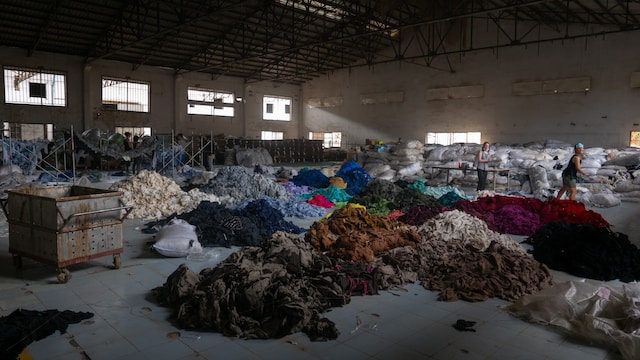In today’s fast-paced world, the fashion industry has experienced a significant shift towards fast fashion. Fast fashion refers to the rapid production and consumption of trendy clothing items at affordable prices. While this may seem appealing to consumers, it is essential to understand the environmental impact associated with this phenomenon. In this article, we will explore the ways in which fast fashion affects the environment and discuss potential solutions for a more sustainable fashion industry.
What is Fast Fashion?
Fast fashion refers to a business model and trend in the fashion industry that focuses on producing inexpensive clothing rapidly and in large quantities. It involves quickly translating the latest fashion trends from the runway to the retail stores to meet consumer demand for affordable and fashionable clothing. Fast fashion brands often prioritize speed and low cost over quality, sustainability, and ethical production practices. This rapid turnover of clothing items leads to excessive consumption, waste generation, and negative environmental and social impacts.
The Environmental Toll of Fast Fashion
Fast fashion has emerged as a major contributor to environmental degradation. Here are some of the ways it impacts the environment:
Pollution from Textile Production
The production of textiles for fast fashion involves the use of various chemicals and dyes, leading to water pollution. Wastewater from textile factories often contains toxic substances, which are discharged into rivers and lakes, harming aquatic ecosystems and contaminating drinking water sources.
Increased Carbon Footprint
Fast fashion relies heavily on globalized supply chains, resulting in high transportation emissions. From raw material extraction to manufacturing and distribution, each stage of the production process contributes to greenhouse gas emissions, thereby exacerbating climate change.
Overconsumption and Waste Generation
Fast fashion encourages consumers to buy more clothes due to the constant turnover of trends. As a result, the demand for clothing has skyrocketed, leading to excessive production and the generation of immense textile waste. Most of these garments end up in landfills, where they contribute to the release of harmful greenhouse gases as they decompose.
Exploitative Labor Practices
To meet the demand for cheap and rapidly produced clothing, fast fashion brands often resort to exploitative labor practices. Workers in garment factories are subjected to long working hours, low wages, and poor working conditions, perpetuating a cycle of inequality and human rights violations.
The Importance of Sustainable Fashion
As the detrimental effects of fast fashion become increasingly apparent, there is a growing need for a shift towards sustainable fashion practices. Sustainable fashion aims to minimize the negative environmental and social impacts of the fashion industry while promoting ethical and responsible practices. By embracing sustainable fashion, we can work towards a more eco-friendly and socially just future.
What Brands Are Included in Fast Fashion?
There are several well-known brands that fall under the category of fast fashion. Some prominent examples include:
- Zara
- H&M
- Forever 21
- Primark
- Topshop
- Uniqlo
- Mango
- ASOS
- Boohoo
- Fashion Nova
These brands are known for their rapid production, quick turnover of trends, and affordable prices. However, it’s important to note that not all items sold by these brands necessarily fall into the category of fast fashion. It’s always a good idea to research and consider a brand’s sustainability and ethical practices before making a purchase.
How to Stop Fast Fashion?
Embrace Slow Fashion
One way individuals can reduce the environmental impact of their clothing choices is by embracing slow fashion. Slow fashion promotes conscious consumption, focusing on quality over quantity. By investing in durable and timeless pieces, individuals can build a sustainable wardrobe that lasts longer and reduces the need for constant purchases.
Choose Ethical and Transparent Brands
When making fashion purchases, it is essential to support brands that prioritize ethical and transparent practices. Look for certifications such as Fair Trade or GOTS (Global Organic Textile Standard) to ensure that the garments are produced in an environmentally and socially responsible manner.
Opt for Second-hand and Vintage Clothing
Buying second-hand or vintage clothing is a sustainable alternative to fast fashion. By extending the lifespan of clothing items, we can reduce the demand for new production and divert clothing from ending up in landfills.
Practice Clothing Recycling and Upcycling
Instead of discarding old or unwanted clothing, consider recycling or upcycling them. Many communities have textile recycling programs that accept old garments for repurposing or recycling into new products.
Frequently Asked Questions (FAQs)
Q: How does fast fashion impact the environment?
Fast fashion impacts the environment through pollution from textile production, increased carbon footprint, overconsumption and waste generation, and exploitative labor practices.
Q: What are the solutions to minimize the environmental impact of fast fashion?
Individuals can make a difference by embracing slow fashion, choosing ethical and transparent brands, opting for second-hand and vintage clothing, and practicing clothing recycling and upcycling.
Q: Is there a connection between fast fashion and climate change?
Yes, fast fashion contributes to climate change through its high carbon emissions, primarily from transportation and manufacturing processes.
Q: How does fast fashion affect workers in the industry?
Fast fashion often involves exploitative labor practices, such as long working hours, low wages, and poor working conditions, leading to a cycle of inequality and human rights violations.
Q: Can sustainable fashion be affordable?
Yes, sustainable fashion can be affordable. There are various sustainable fashion brands that offer reasonably priced, ethically produced clothing options.
Q: How can consumers support sustainable fashion?
Consumers can support sustainable fashion by making conscious purchasing decisions, researching brands’ sustainability practices, and demanding transparency from the fashion industry.
Conclusion
Fast fashion has undoubtedly revolutionized the way we consume clothing, but it has come at a significant cost to the environment. From pollution and waste generation to exploitative labor practices, the negative impact is undeniable. However, by embracing sustainable fashion practices and making conscious choices, we can collectively mitigate the environmental toll of fast fashion. It is crucial for individuals, brands, and policymakers to work together toward a more sustainable and ethical fashion industry, one that respects both the planet and its people.




